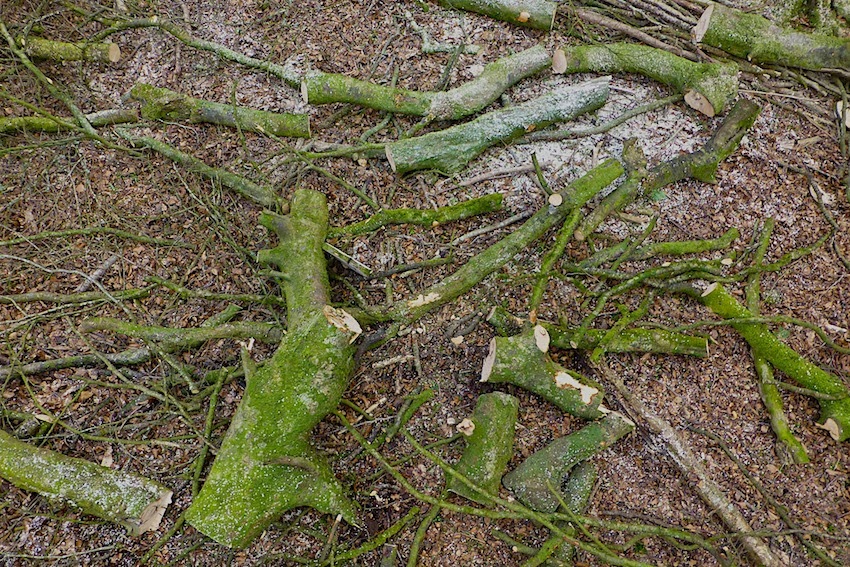It has been a slow start to the new year but slow, I am sure, is good. We have started cutting, clearing and burning on some land that has been mostly left alone for the best part of 50 years, so there is no need to rush it.
 |
| Gorse bushes grow as tall as trees |
It is one of those places where Nature has been left to do its thing. The trees have grown tall and lanky. The gorse, moss covered and luminous green, is 25ft tall in places. Honeysuckle curls and twists around the thorn trees. Granite boulders stick up like giant stepping stones in the bracken. Last years nests are cradled but crumbling in the forks of branches. It is one of those long forgotten corners which a large part of me wanted to leave well alone.
|
 |
| Some of the gorse will be left for nesting birds |
"But it's no good for butterflies" said the man from
Natural England who had come to assess the habitat for butterfly potential. He cast a despairing look over the hillside covered in a tangle of thorn, gorse and bramble. " It will all have to go, it has almost no wildlife value at all."
Since then it has taken a few years to fully embrace the butterfly project on this patch of hillside but on reflection the wildness of this place is not ancient, there are signs everywhere of human activity; the old granite hedges, the leats and tailings of an old copper mine, hazel and oak coppice stools, granite boulders split and cut for lintels and gateposts, even an old hammock made from a fishing net 35 years earlier. This is a place that has known people for centuries.
 |
| Clearing the scrub around the old copper mine |
And as for the wildlife, the trees have grown up in all their beautiful moss covered lankiness, but it has got darker, damper and the variety of species of plant life, has grown less. Barely any sunlight penetrates even in winter and apart from a bit of ivy the ground is bare and the understory hollow. What I once thought of as a wildlife sanctuary, has become more and more like a wildlife dead zone.
 |
| The cows follow the saw browsing on hazel tops and ivy |
Although it is a radical approach, any management, that increases the biodiversity of a place, must be a good thing and although the work here is targeted particularly at the
butterflies, I am sure that other species will benefit as well.
So now when there is that smell of two stroke in the air and the sound of the chainsaw rips the air, it feels brutal, but I know it will bring more, not less, life to this tiny patch of land. After all, the chainsaw work will soon be done, the fires burned out, replaced by the gentle foraging of the cows.





















